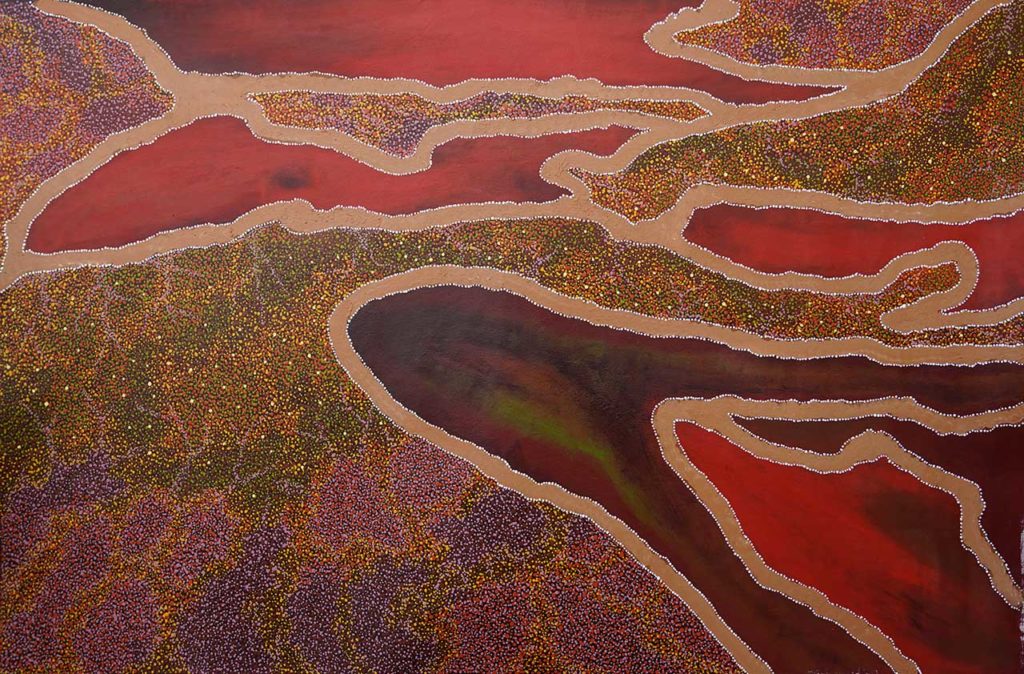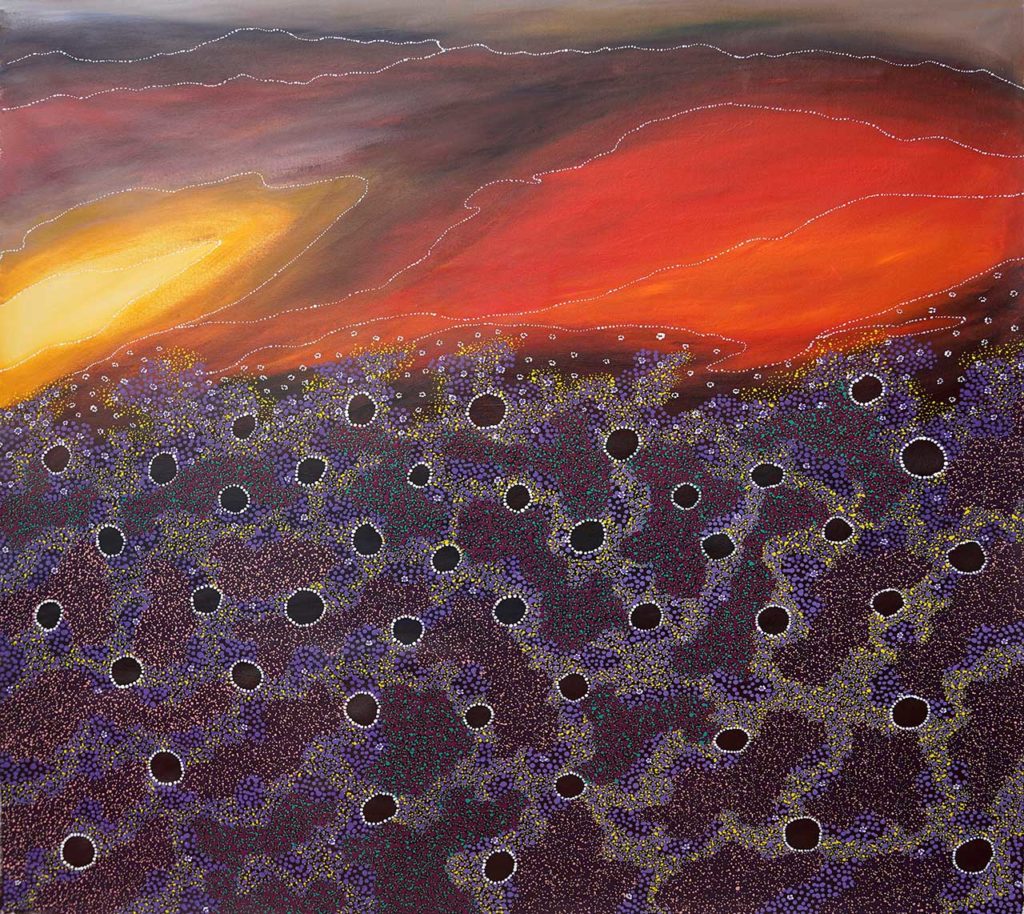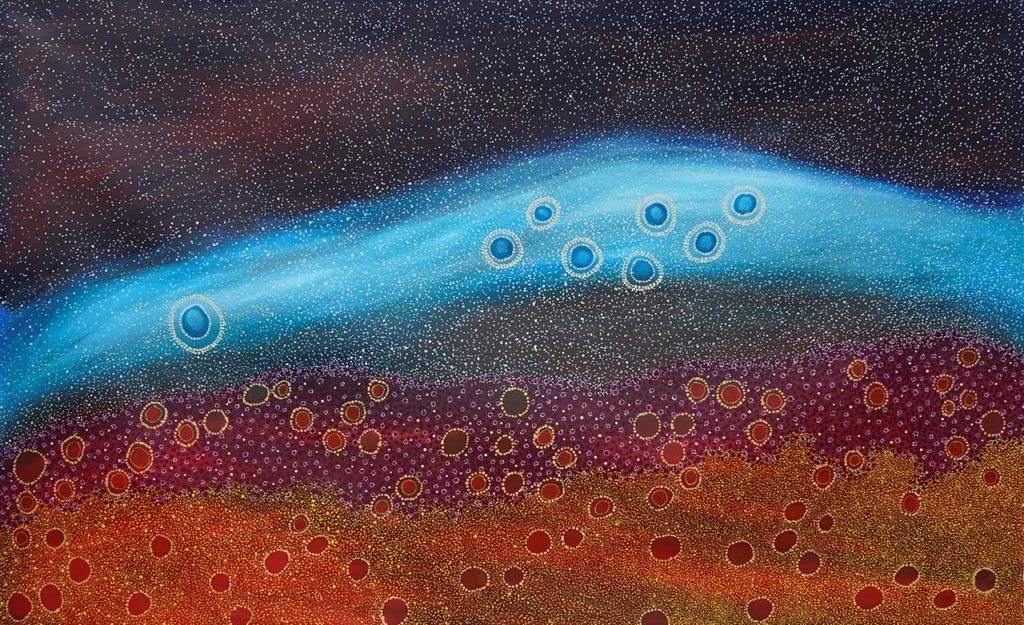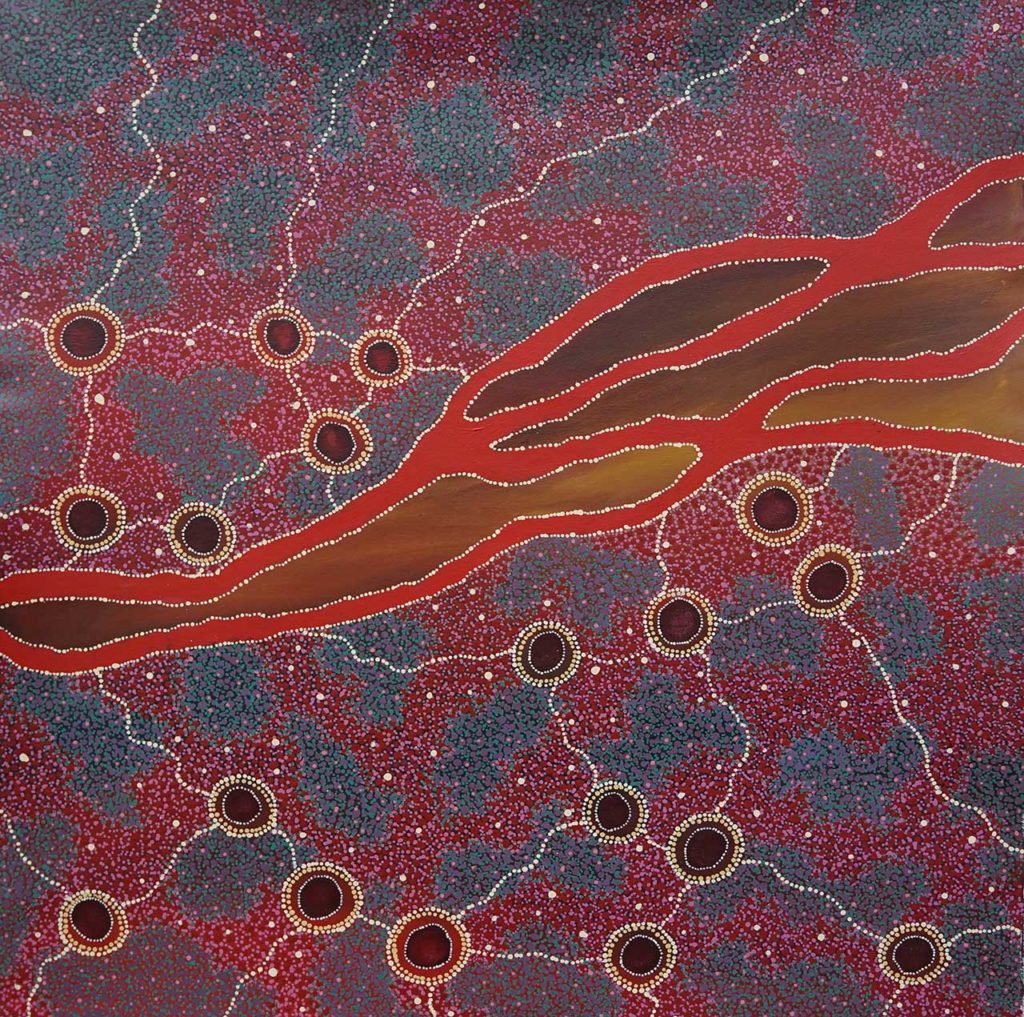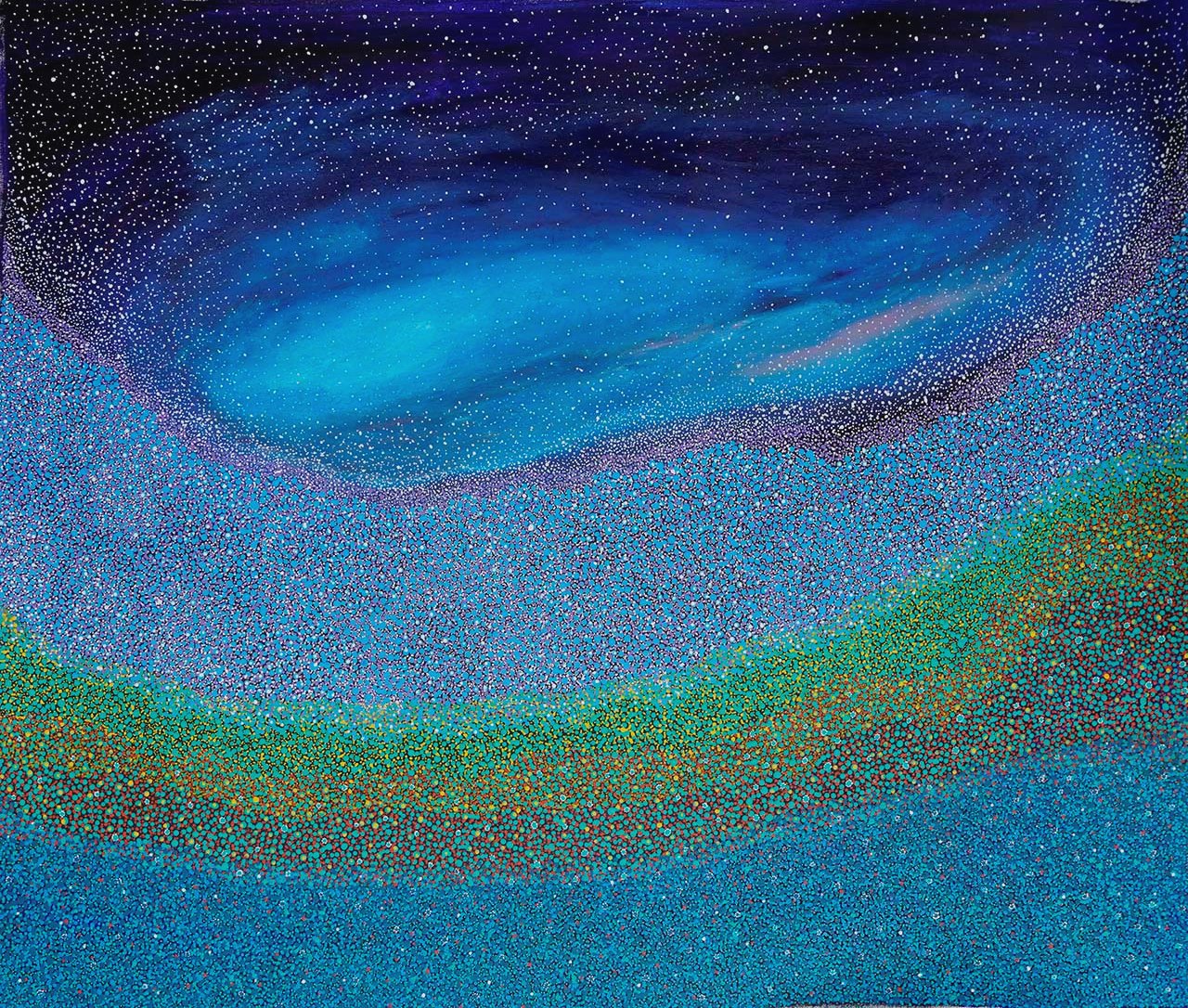A Walk Through of Sonya’s Edney’s First Solo Show
This is Sonya Edney's first solo show at Japingka Gallery. Originally from Carnarvon, Sonya's art is fresh, exciting and uplifting. David Wroth takes us on a walk through of this exhibition and talks about some of the art from this gifted artist.
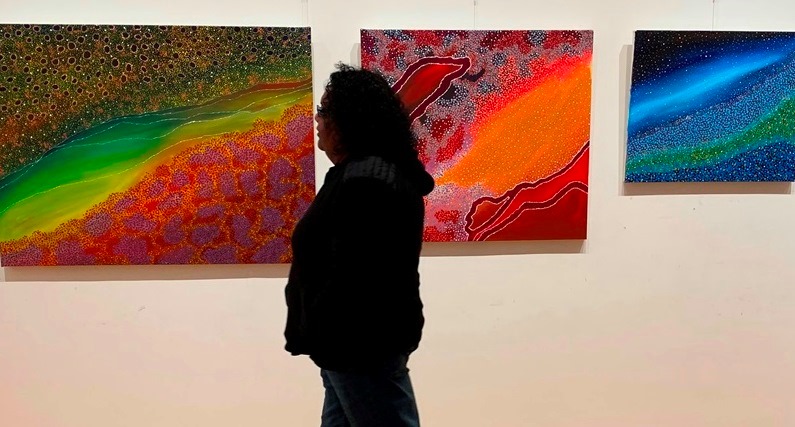
The first painting in Sonya's exhibition is one that Sonya completed early in the range of artworks that she painted for her show. It's on the cover of the exhibition invitation. This is a really strong image of Gascoyne Country, and you feel it draws you into the landscape. It brings you there with the fullness of the red earth and the colours of the wildflowers and the bush in Spring. It recreates that huge space that is part of the feeling of Ingarrda Country, as Sonya names it. I think this is a fantastic painting and it really gives us a sense of what Sonya is talking about through her art.
This painting, Springwater and Bush Tucker, like many of Sonya's works, draws us into a space that is part landscape and part the spatial feeling around landscape. The painting is divided into three clear sections by one open area that could be water or could be reflections of sky. On one side there is green country with bushes and small flowers, and on the other side there is what feels more like clay pans, red earth marked with purple. This artwork carries the feeling of the different qualities of country. There may be water running through the middle of it. You walk into these landscapes and you feel the different aspects of Country and the changes of season.
Sonya called this next work, Bush Fire Country. As we view it you can feel that sense that you're looking down on Country in the lower half of the painting, and then there's a horizon merging into the fiery red upper part. The land is burning, and we are seeing the life of the Country in one section of the painting and we're seeing the burning off, the intensity of fire in open country in the other. It is beautiful composition and design by Sonya. I love the use of colour as well as the way the artist has placed it. You can see how the yellow goes through the deep dark colours in the country, and then emerges in the smoke and haze above the red fire zone. This is a gorgeous painting by Sonya that explores the changing dimensions of Country.
Sonya has made a number of works based on the night sky and the importance of the vast sky in Ingarrda Country. This painting, The Seven Sisters, Sonya also feels is about her family and her sisters. There is a shared traditional story of Seven Sisters that crosses all parts of Aboriginal Australia. Sonya has incorporated the darkness of night sky with the incredible bold design of the constellation, the Pleiades, the Seven Sisters. Down below she's got her signature style for country, representing spinifex, grasslands and flowers. There's no clear distinction between the sky and the land. It merges together, both from the symbols used and the feel of the paintwork, the dots that go right through the starry night sky also go right through the land. You get a sense that you're in the landscape, you're part of the landscape, and the huge sky is arching overhead.
The variation in landscapes in this next work, Travelling to Different Camps, is wonderful, giving different feelings and mood to the process of travel. Sonya's quite clear about knowing where in her emotional journey and her physical journey through the country each of her different paintings sit. She feels the emotional quality of the paintings and remembers where she was when she put that painting together. There's a sense of moving between different locations, visiting relatives and extended clan as she is moving across Country. There is some of the classic desert imagery for people moving across land, imagery seen from above, but it has Sonya's distinctive hallmarks. It's got that rich colour. It's got this wonderful integration of space and design that makes her landscapes so distinctive.
This is another one of Sonya's distinctive night sky paintings. This is the story of the emu that's seen in the middle of the Milky Way. It becomes the dark shape within the stars, and a major constellation and a marker that's used to signal the change in season. When this constellation, this part of the night sky is overhead, it is the time when the emus are nesting. In this way people traditionally knew what's happening on the land by what's happening and appearing in the night sky. This painting has the broad sweep of a landscape, with the exception that you're looking up, so you get the powerful bands of the Milky Way and the night sky. The artist has moved into using the blues and blue-black colours of the night sky to tell a different sort of story.

